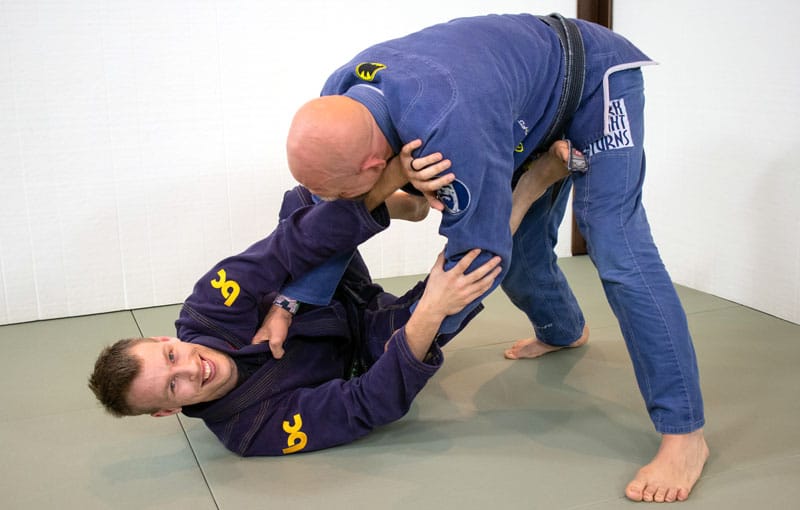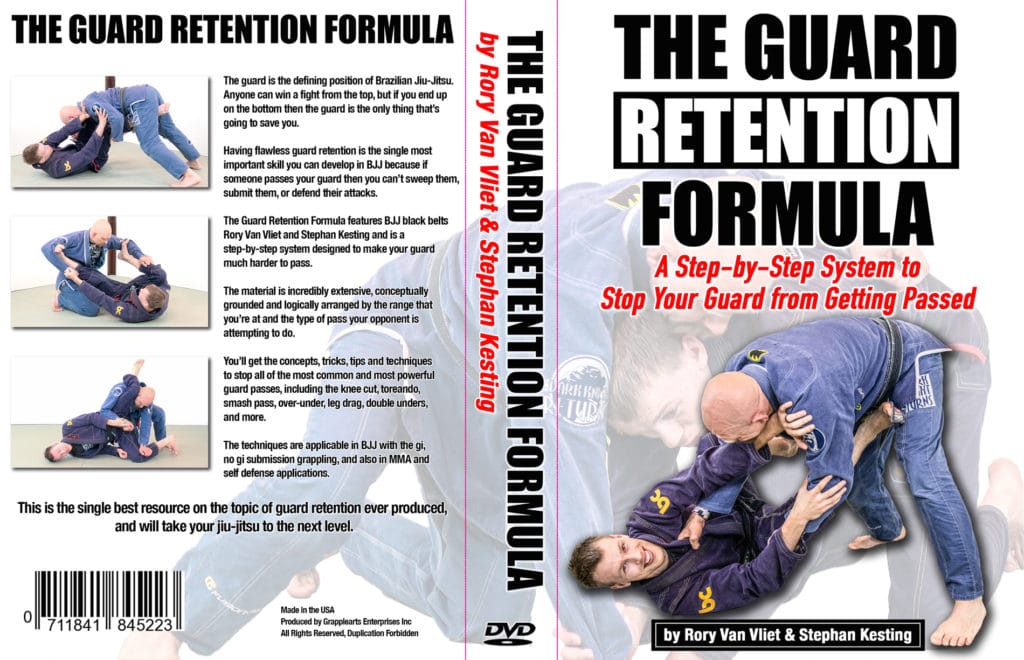Being stuck under side control (aka ‘side mount,’ or ‘100 kilos’) is one of the great challenges in jiu-jitsu. Here your opponent is able to put a TON of weight onto you, crush your face, attack your arms and neck, and advance his position by getting to the mount or taking your back.
In short, being on the bottom of side control sucks, and you have to have some good ways to escape it!
Here’s a video I did with BJJ black belt Thomas Lisboa that shows how to get out from the bottom of side control, including some really great details a lot of people don’t know.
Here are three details that make this method of escape even more powerful…
Side Control Escape Detail 1: Block the Biceps
Being trapped in side control is bad enough.
But if your opponent manages to get his top arm under your head and then turn your face away with his biceps area – a move known as the crossface – then life really gets terrible.
The crossface limits your ability to move and turns your arms and legs so that they’re facing away from your opponent,
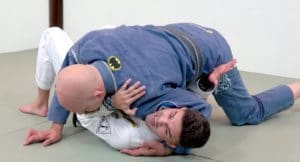
Top Man Has Established the Side Control and the Crossface
Now there are still ways to escape this position, but your job will be infinitely easier if you pre-emptively block the crossface before it ever gets established.
Thomas emphasizes using your near arm to block his top arm at the biceps/triceps area as soon as possible. The goal is to cup your hand around his upper arm and then pin his upper arm to his body.
This makes it almost impossible for him to get the crossface and also significantly impedes his ability to attack your arms or apply the choke.
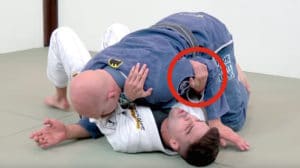
Bottom Man is Blocking the Crossface at the Biceps
Side Control Escape Detail 2: Bridge, then Shrimp
Most BJJ escapes rely on some form of hip movement, and the most common form of hip movement is called ‘shrimping.’
Shrimping is a movement in which you base on one or both feet and one shoulder, lift your hips off the floor, and then use this lack of connection to the floor to move your hips in the appropriate direction (click here for a detailed breakdown of shrimping in BJJ).
The trouble is that many people try to escape from side control simply by shrimping, shrimping, shrimping in the same direction.
Without a partner that movement looks something like this…
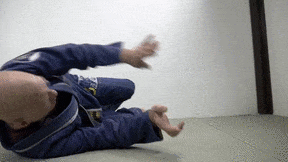
Sideways Shrimping
Sideways shrimping is great but someone on top can move faster than someone on bottom, and so a good opponent will close the space you’ve generated with your hip movement before you get a chance to use it.
That’s why you need a more powerful motion – the bridge – to create a lot of space initially which you then take advantage of with the shrimp.
This bridge and shrimp movement (method 6 in my Ultimate Guide to Developing BJJ Hip Movement Through Shrimping) looks something like this…
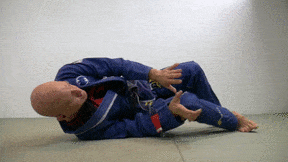
Bridge and Shrimp
You can see a breakdown of how these two movements work together when you’re with a training partner starting at about 2:40 in the video near the top of this page.
Side Control Detail 3: Knee Inserts at the Hip and Carves Up to the Shoulder
The purpose of the bridge and shrimp movement is to create the space to get your knee and shin between you and your opponent.
You then use that one leg to push yourself away from your opponent and reestablish guard.
The trouble is that many people try to bring their near leg across their opponent’s belt line which then allows the other guy to sprawl flat, smash the leg and pass the guard again.
This is why after your knee inserts at the hip you then carve it up towards your opponent’s near shoulder.
This is a concept that’s hard to describe in words but is quite obvious in the video that Thomas and I filmed together. Check out the video near the top of the page from about 3:20 onwards for a detailed explanation of how your leg travels when you re-establish the guard.
I hope your found this technique along with all the details and concepts useful!
Good luck with your training,
Stephan
About Thomas Lisboa: Thomas is a BJJ black belt with an extensive competition history who now teaches BJJ at Alliance Vancouver. Follow Thomas on Instagram at @thomaslisboajj
Suggested: The Guard Retention with Rory Van Vliet and Stephan Kesting
The guard is the defining position of Brazilian Jiu-Jitsu. Anyone can win a fight from the top position but on the bottom only the guard can save you.
If someone passes your guard then you can’t sweep them. If someone passes your guard then you can’t submit them. And if someone passes your guard then you can’t defend against strikes.
That’s why guard retention is the single most important skill you can develop in BJJ.
To help you make your guard much harder to pass check out The Guard Retention Formula that I filmed with BJJ black belt Rory Van Vliet.
In this conceptually grounded instructional you’ll get step-by-step methods to stop all of the most common and most powerful guard passes, including the knee cut, toreando, smash pass, over-under, leg drag, double unders, and more.
It’s incredibly extensive and will have gi, no gi, MMA and self defense applications.
As we were filming it I kept on thinking that if I had had this material as a white belt I would have had an absolutely impassible guard. It would have taken years off of my learning curve.
I’ve been a black belt now for almost 14 years and I still learned a ton from Rory’s teachings. I’ve already used some of the techniques and approaches in my own sparring and it has really helped.
So I can confidently say that this instructional will help everyone from white belt to black belt.
This is the best resource on the topic of guard retention that I have ever seen.
Click here for more information about The Guard Retention Formula!
The post How to Escape Side Control appeared first on Grapplearts.

